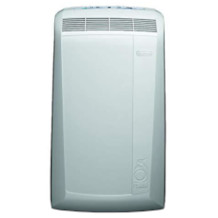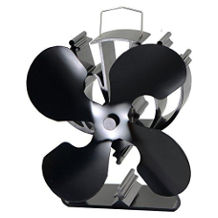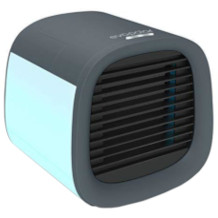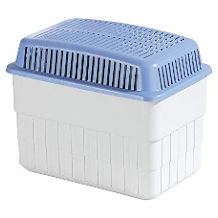Pedestal fan purchasing advice: how to choose the right product
- What you need to know
- Pedestal fans are great for ventilating medium to large rooms.
- A powerful fan will be able to circulate all the air inside a room.
- Check how loud any fan is before buying.
- When choosing a pedestal fan, factors such as design, performance, and extra features are important.
A pleasant breeze
In recent years summers have been getting hotter and hotter. Having constant ventilation from a fan is a great way to combat the heat and cool your body down. Pedestal fans are a popular option – read on for an overview of what to consider when choosing one.
What are pedestal fans exactly?
Often referred to as standing fans, pedestal fans work just like normal fans. They don’t actually change the temperature of the room. Pedestal fans make you cooler by blowing air over your skin. This increases how much sweat and moisture can evaporate, and therefore cools you down. Fans also blow away any body heat which also decreases how hot you are.
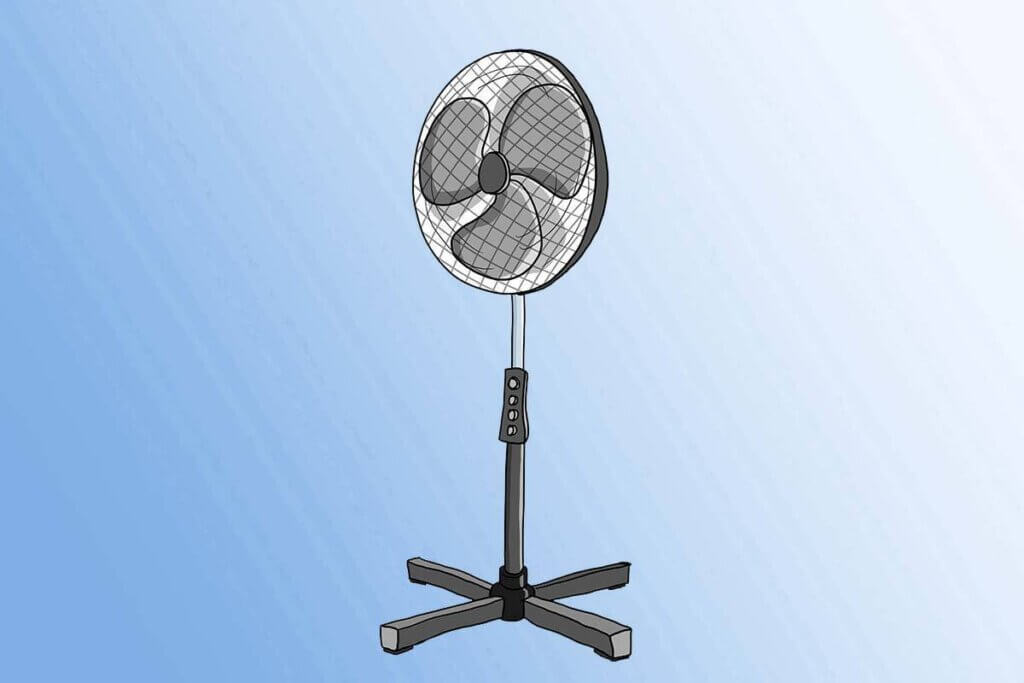
How do they work?
The actual fan in a pedestal fan is similar to a propellor on an airplane. It is powered by a motor, which makes it spin. As it spins, it sucks air in the back and blows it out of the front.
What special features do pedestal fans have?
Pedestal fans are designed to always be put on the floor. They have an adjustable stand, which means you can set the perfect height for air to be blown around. This flexibility is extremely useful for always getting the best experience. For example, when you sit on your sofa, you’re usually lower than when at a table. They are also mobile: provided you have a power socket nearby, you can set it up anywhere. This means you could use it in your living room in the day and put it in your bedroom at night.
Construction
Pedestal fans usually consist of an adjustable stand with a fan at the top, encased by a protective metal grille. The fan consists of a motor and blades. The power cable is often directly attached to the motor. The metal housing on pedestal fans is generally larger than on table fans, and the motor is often more powerful. A lot of models also have an oscillation sweep, which means they swivel as they work, so you get good distribution of airflow around the room.
Who are pedestal fans best for?
Pedestal fans are a great option for cooling multiple people simultaneously. This said, they’re also good for people living alone, as you can move them around easily. Due to their size, they are quite prominent in a room. Going for a model with a cool design can really enhance your home décor. There are even models with integrated lights.
There are a lot of different models out there on the market, and some come with useful additional features. These include timers and remote controls. This said, if you’re just looking for a simple device, you’ll have no problem finding one.
Types of pedestal fans
The price range for pedestal fans is huge. Budget devices start at around $20, while luxury fans can cost well over $300. What underpins these crazy differences in price?
Budget fans
Despite their cost, $20 fans offer a lot. They have adjustable stands and tiltable fans, as well as an oscillation sweep. In addition, they usually have variable power levels and a full-sized fan. All this begs the question, why would you spend any more?
The answer isn’t anything to do with safety: all fans need to be sold with a safety approval seal. The money you save on one of these budget devices is mainly due to the fact they lack any accessories and have simple designs. Additionally, they often aren’t as durable, as quiet, or as energy efficient as more premium models. Cheaper fans break easier, especially as they are prone to falling over. If you’re lucky, the fan will last more than a couple of years. Overall, the initial savings you make in buying a cheaper fan generally won’t pay out over time – it’s a better idea to buy something higher quality.
Luxury fans
Top-end pedestal fans can cost over $300. Just like entry-level models, they are height-adjustable, tiltable, oscillate, and have different power levels. It’s often the case that expensive fans have interesting designs. Plastic is quite uncommon – most fans in this price bracket are made of wood or metal. Thanks to these high-quality materials, top-end fans are extremely stable and durable.
Luxury pedestal fans tend to be extremely energy efficient. Good for your wallet and for the planet. This said, price doesn’t always equate to features. A lot of expensive fans don’t have remote controls, for example.
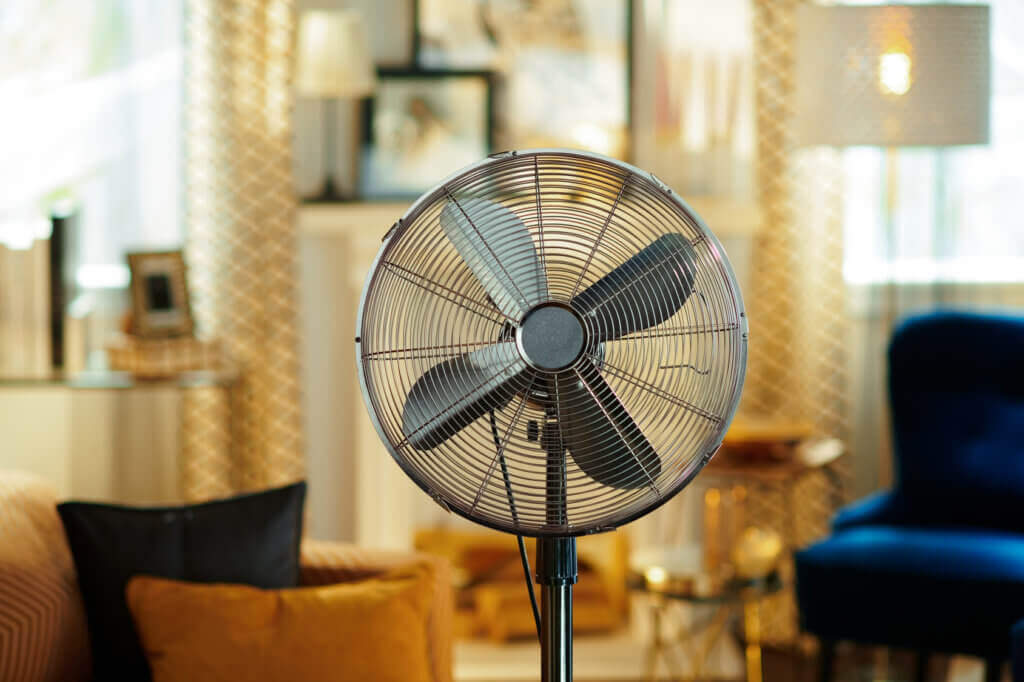
The happy medium
A lot of the time, the best value pedestal fans are mid-range devices. They have all the necessary features and are durable, as well as looking good while not using too much electricity. Comparing models really pays off.
When shouldn’t you use a pedestal fan?
In some cases, pedestal fans aren’t the best. For example, in smaller apartments and rooms, they can often take up too much space. In this case, something like a wall or table fan makes more sense as they are smaller, and don’t take up any floor space. In addition to this, pedestal fans tend to be quite powerful – too much for a tiny room. Smaller fans are better in this case, as they have a small footprint and often consume less electricity.
A lot of pedestal fans are quite loud when turned on. Make sure to check the decibel rating, especially if you’re planning on using it in your bedroom while you sleep. Here some pros and cons of pedestal fans at a glance:
Advantages
- Larger and more powerful than a lot of fans
- Cheaper and more eco-friendly than AC
- Refreshing as soon as you turn them on
- Easy to clean
- Low maintenance
- Suitable for medium to large sized rooms
- Most are height-adjustable, and can swivel and tilt
- Easy to move
Disadvantages
- Do not cool down room temperature
- Not suitable for small rooms
- No model is completely silent
- Can stick out visually with the room décor
Buying tips
It can be quite overwhelming when trying to choose a specific model from the huge range of pedestal fans out there. So, what are the most important things to consider?
Material
Pedestal fans tend to be made from plastic, metal (stainless steel, chrome, bronze), or wood – although wooden fans are quite rare nowadays. As a general rule: the more plastic, the cheaper and less eco-friendly the fan.
Design and color
Most pedestal fans are usually either white or black, but you can get some funky designs in different colors too.
Dimensions
When choosing a fan, make sure the base isn’t too wide for where you’re planning on putting it. Height is usually adjustable – it makes sense to get a steplessly adjustable stand, rather than one with pre-set height levels.
Stand
Telescopic rod or tripod? When choosing your pedestal fan, you need to decide on what kind of base and stand you want. The most important thing is that it is stable, which means it should be quite heavy. This is especially important if you have pets or kids. Some models can also be mounted to walls.
Power and speed
Most pedestal fans have a maximum power output of around 50W and have different power levels. A lot of fans are quite loud on maximum power.
Oscillation and tilt
Many (but not all) pedestal fans have a rotor which rotates 90-180 degrees. This is often referred to as oscillation. Being able to tilt the fan horizontally is also a useful feature to have.
Cables
Pedestal fans come with power cables in different lengths. Make sure to check, and if you need more flexibility, go for a model with a long one.
Weight
Most pedestal fans weigh between 4 and 17 lb (2-8kg). As a rule, the heavier the fan, the more stable it will be – but don’t go for a super heavy model if you need to move it a lot!
Volume
Most pedestal fans operate with volumes between 30 and 70 dB. Anything more than 40 dB will be pretty distracting, especially if you need to concentrate. Some people find the constant background noise calming, but if you don’t, there are also models on the market specifically designed to be as quiet as possible. These are a great option for the bedroom.
Assembly
A good pedestal fan should be easy to assemble and de-assemble for cleaning and storage.
Additional features
Some models come with extra features such as:
- Handles
- Lighting
- Timers
- Night mode (extremely quiet)
- Remote controls
- Water misting
- Battery power
Wet weather
Some pedestal fans are suitable for use outdoors and in damp rooms. The main thing to check if you want one for this is the IP rating, which shows how protected it will be from water and dust.
Usage tips
Over time, pedestal fans get quite dirty due to dusty air passing through them. It’s a good idea to give your fan a wipe with a damp cloth from time to time – if you dust it weekly you’ll only need a feather duster. If your fan gets extremely dirty, you will need to take it apart to properly clean it. This is how to do it, step by step:
- Unplug the fan.
- Remove the front grille – this is usually done via hooks or adhesive tape.
- Remove the blades: unscrew the nut, and pull the rotor blades off.
- Remove the back grille.
- Wash the grilles and blades with warm water and dish soap, and then dry them.
- Wipe the rest of the pedestal fan down with a damp cloth – don’t let the insides get wet.
- Reattach the grilles and blades.
- Plug the fan back in.
Is putting a cold towel over your fan a good idea for cooling down your room?
Often recommended, but not a good idea. Putting a wet towel on your fan will make it cool the room down, but it can also damage the fan. In the worst case, the water could cause an electrical shortcut. What happens more often is that the weight of the towel will break the rotation and tilt capabilities of the fan. Nobody wants a fan that only points at the ground.
A further problem comes from making your room too humid. Water droplets will condense and can damage other electrical items, as well as causing mold.

If you want to improve the cooling effect of a fan, the best thing to do is make your own body slightly damp. There are some pedestal fans that do have water misters, but these can also damage other electrics in your room. It’s best to use these outside.
Dangers associated with pedestal fans
Just like with all electronics, make sure the fan you’re buying is approved for electrical safety. While no electrical appliance is 100% safe, the accident risk is very low when used properly. Fans with open blades can cause injuries, so make sure the grille is always on. Another thing to watch out for is whether the power cable will be a trip hazard.
While no electrical appliance is 100% safe, the risk of incidents is very low with proper use. In addition, open fans can cause injuries from the spinning rotor blades, which is why you should not remove the mesh baskets. Another hazard is posed by the cable and the stand feet, which are a dangerous tripping hazard in awkward places.
Safety tips
- Make sure the stand is table.
- Don’t let kids play with the fan.
- Keep the fan away from water and high humidity.
- Keep the fan away from curtains, walls, furniture, plants, and other objects.
- Don’t put any cloths, towels, or clothing on the fan.
- Don’t put any ice or water containers on the fan unless specified in the manual.
- Unplug when not in use.
- Don’t let it run constantly for several days.
- Follow the manufacturer’s instructions for high room temperatures.
- Don’t plug in too many appliances from one socket.
- Don’t make any modifications to your fan.
- Position the stand and the cable so that they are not a trip hazard.
- Don’t put the cable under a carpet.
- Do not use the fan if it is damaged.
The Korean fear of fans
In South Korea, having a timer on a fan is especially popular. The reason? Many South Koreans are afraid of “fan death”. There is a belief that fans can consume the air in the room, causing people to suffocate. This idea is not scientifically tenable. Fans can only set the air in motion, they don’t consume it like someone breathing would. In fact, the alleged victims of fans in South Korea have mostly died of heat stroke.
FAQs
1. Where should I put my fan?
The best place to put your fan mainly depends on where people are in the room. It shouldn’t be too close, nor too far away. The front needs to face where people are, as that is the direction it will blow air towards – no point in directing it at a wall! Make sure the power cable isn’t a trip hazard either.
2. Can I use the fan as an air con?
Summer storms can sometimes provide a lot of colder air outside. You can use your fan to blow cold air into your home, and hot air out. If you set the fan up with its back towards a window, it will blow the colder air inside.
Warning: appliances during thunderstorms
Operating electrical appliances during or shortly after a thunderstorm is not recommended. A lightning strike directly into the house or into the ground in the surrounding area can cause overvoltages that can damage equipment connected to the electricity, water, or telephone network. In addition, the risk of fires also increases. During a storm, unplug your fan from the mains. Often, home insurance won’t pay out for overvoltage damage.
3. Can I use a fan for heating?
Fans don’t produce much heat (only that coming from the motor), but they can be used to distribute heat from say, a radiator, better in a room. Due to convection, hot air rises, so if you point your fan at the ceiling, you can make your room warmer by displacing it from up there. When doing this, always run your fan on the lowest power setting. Fans are a good way to save on heating costs during the winter.
Image 1: © FinalCheck | Image 2: © Alliance / stock.adobe.com | Image 3: © kei907 / stock.adobe.com

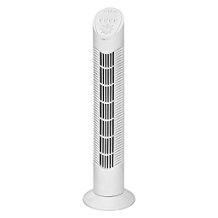


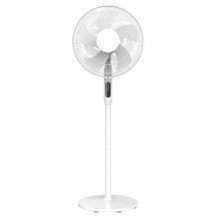
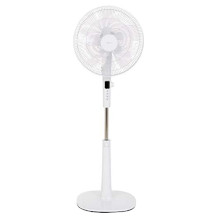
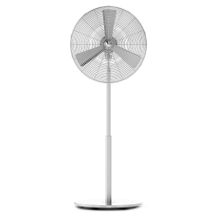
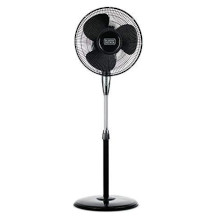
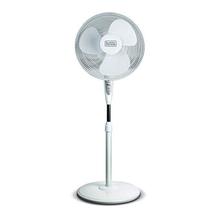
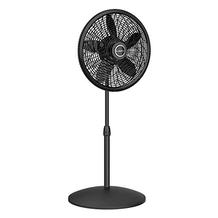
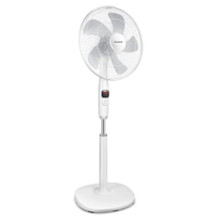
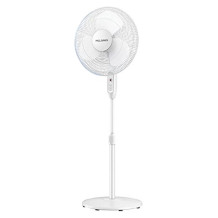
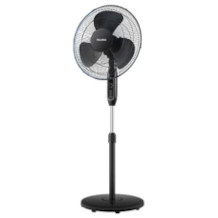

 no reviews
no reviews
